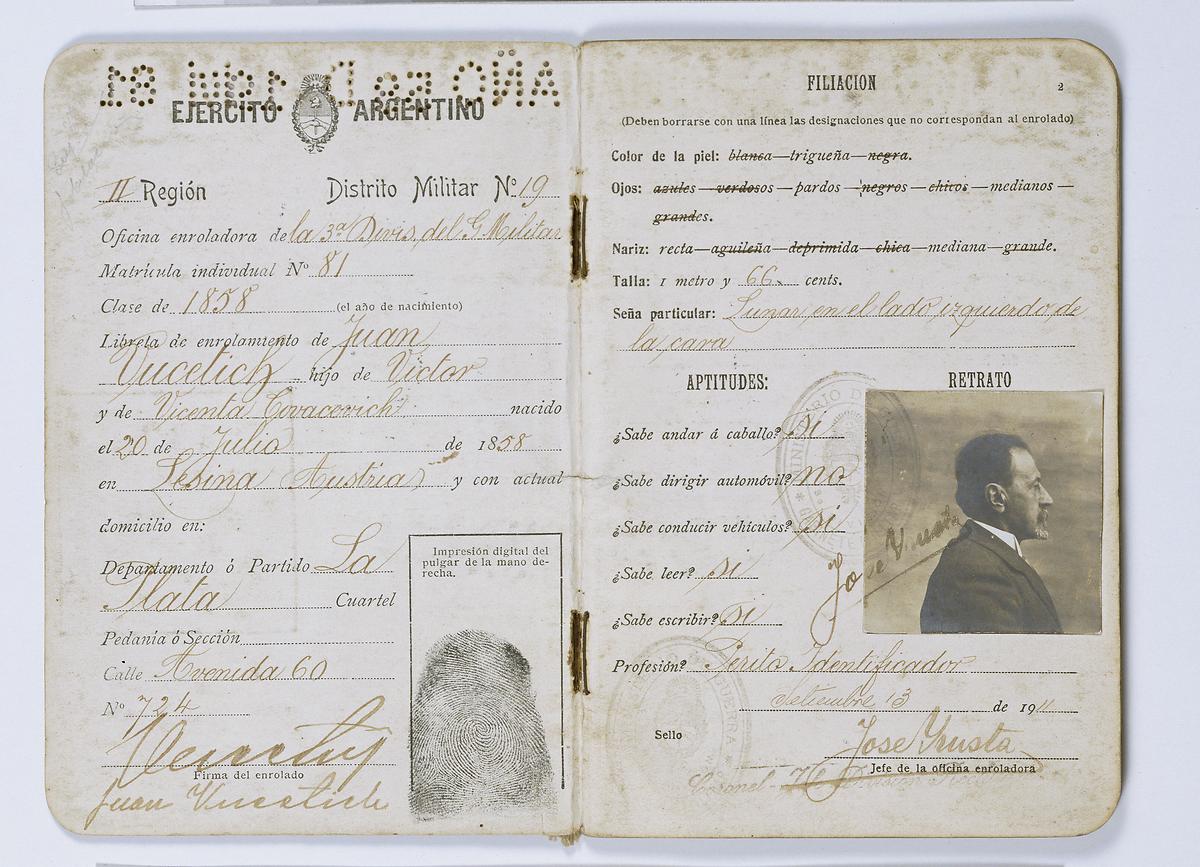Image courtesy of Nuestro Stories.
There is a misconception that peripheral regions — South America and Africa, for example — are two steps behind in scientific research, but nothing could be further from the truth.
We have previously told you about inventions that changed the history of humankind and were conceived in Latin America, such as the cordless telephone or birth control pills.
Did you also know that Latin America has been the cradle of fundamental scientific achievements for humanity?
Here are some that you probably didn't know about.
Fingerprinting was invented in Argentina

Argentine Juan Vucetich was working in the police department of La Plata when he became interested in the works published by Francis Galton.
In 1891, Vucetich began to develop a method for matching fingerprints, and a year later, he would use it to solve a crime.
It was the murder of two children in Necochea. The initial investigation indicated that the perpetrator was a man close to the children's mother. However, a bloody fingerprint was found at the crime scene, which Vucetich corroborated as the mother's.
The woman would confess to the crime after being confronted with the evidence, and the world of criminology was changed forever.
Six years after the effective use of the fingerprint as an identification mechanism, it has been acclaimed as the most effective method for identifying people by the Academy of Sciences of Paris.
Today, this scientific achievement goes beyond criminal cases; it is used to unlock cell phones, for example. In the United States, the IAFIS (Integrated Automated Fingerprint Identification System) processes just over 63,000 fingerprints every day.
A team of scientists invented low-cost ventilators in Brazil
The COVID-19 pandemic reminded us that an invention like the ventilator could save millions of lives. However, the price of a ventilator on the market is approximately $2.8 thousand.
The increasing demand for this product led a group of Brazilian scientists, led by Drs. Marcelo Zuffo and Raul Lima, to find a more economical solution.
The name of the low-cost ventilator is INSPIRE, and it is intended for use in emergencies when there is a shortage of intensive care units. While others can cost thousands of dollars, this one costs only $190.
Its low cost makes it a quick production product, which makes it essential due to high demand, and it also has the advantage that it can last up to two hours without electricity. This feature is helpful for use in remote locations where electricity is limited.
The leprosy vaccine was synthesized in Venezuela
Today, to speak of leprosy is to think of biblical times. The disease, considered one of the most dreaded in the history of humankind, means that patients have to isolate themselves and live in terrible conditions.
But Venezuelan doctor Jacinto Convit went to these areas to find a solution.
In 1987, Convit's research combined a vaccine against tuberculosis and the bacillus Mycobacterium laprae using an armadillo, the only animal capable of becoming infected with leprosy.
The success of his work, and the impact of his scientific achievement, led him to be nominated for the Nobel Prize in Medicine in 1988.
The Kangaroo Method in Colombia saved thousands of lives
In the late 1970s, the Instituto Materno Infantil (IMI) in Bogotá, Colombia, functioned as a first-level hospital, meeting the needs of a large sector of the capital's low-income population.
This institution's conditions to carry out its mission were not the best; there was a critical situation of overcrowding and mortality among low birth weight newborns.
Premature babies were isolated from their mothers, resulting in a high rate of abandonment due to long periods of separation. And because of the high number of newborns, the babies were prone to the spread of infections and other diseases.
Doctors Edgar Rey Sanabria and Héctor Martínez Gómez, concerned about this situation, and contributing to the search for effective solutions, introduced a method to alleviate the shortage of caregivers for preemies to have early contact with the mother and natural breastfeeding.
This revolutionary idea met with initial resistance because it gave mothers access to a hitherto restricted place.
However, outpatient management of premature infants quickly began to decrease morbidity and mortality rates, which encouraged Drs. Rey and Martinez to propose a broader strategy that would become what we know today as the Kangaroo Program.





